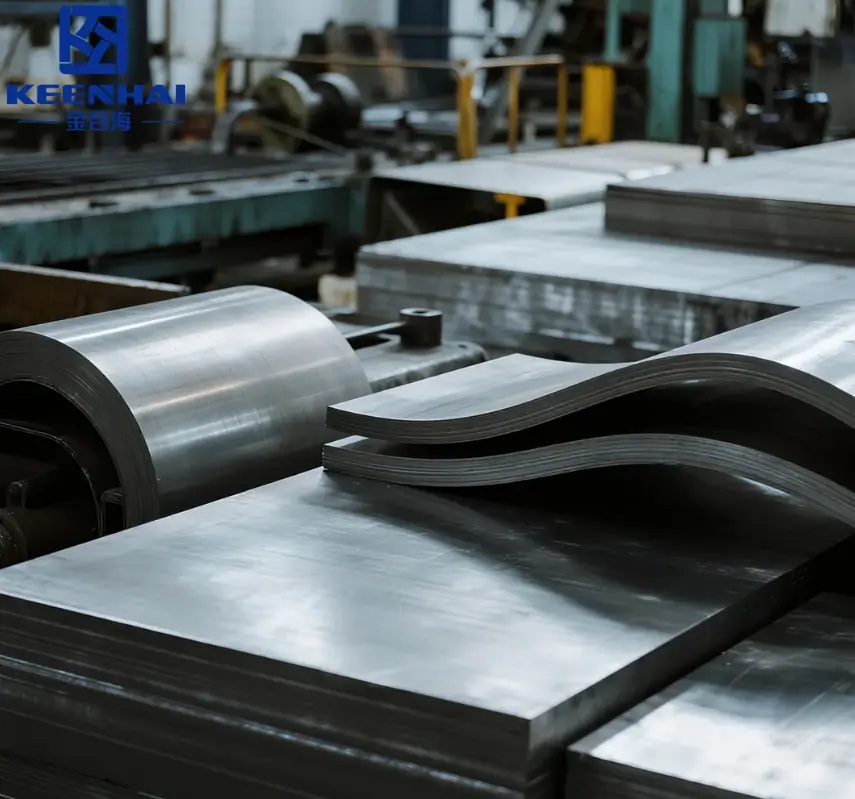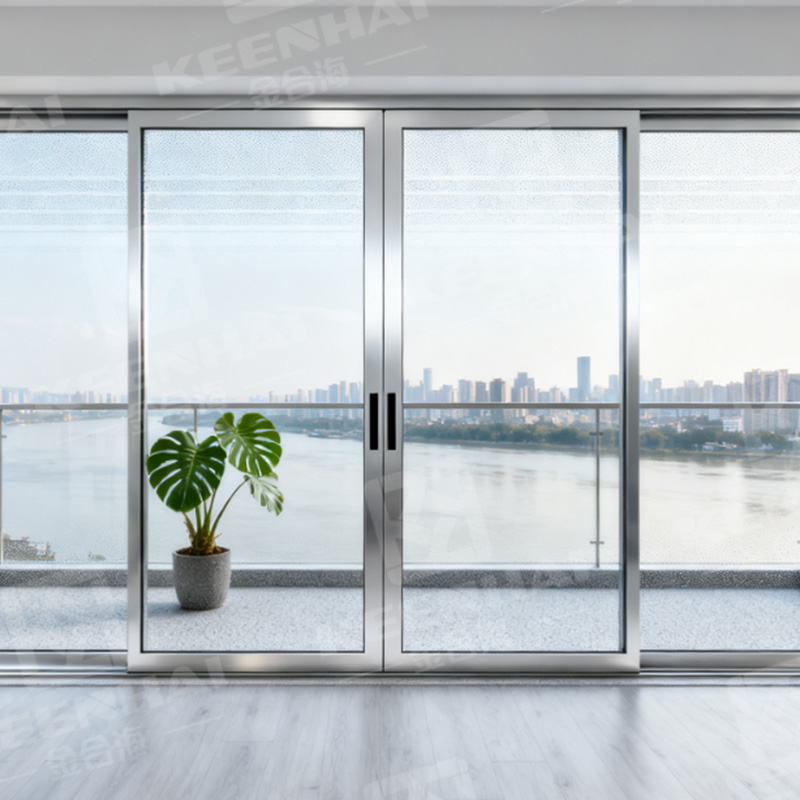The average cost of stainless steel elevator doors in 2025 ranges from $1,200 to $4,000 depending on material grade, door type, and finish. Residential doors tend to be on the lower end, while commercial or custom doors with mirror or etched finishes cost more. Factoring installation, customization, and maintenance gives a realistic total investment for long-term durability and premium aesthetics.
1. Average Cost of Stainless Steel Elevator Doors in 2025
When planning a new installation or upgrading an elevator, understanding the average cost of stainless steel elevator doors in 2025 is essential for budgeting and selecting the right solution. Prices vary depending on material, finish, door type, and whether the project is residential or commercial.
1.1 Typical Price Range for Standard Models
Standard models mostly use 304 stainless steel, which is durable and cost-effective. Prices generally range from $1,200 to $2,500 per door depending on size and finish. 316 stainless steel doors, preferred for high-traffic or coastal environments, cost $2,500–$4,000.
For instance, a mid-size office in Chicago recently installed custom brushed 304 stainless steel doors, paying about $1,800 per door. The brushed finish minimizes fingerprints and minor scratches, ideal for busy lobbies.
Cost Breakdown by Material and Finish
| Material Grade | Finish Type | Typical Price (USD) |
|---|---|---|
| 304 | Brushed | 1,200 – 2,000 |
| 304 | Mirror | 1,500 – 2,500 |
| 316 | Brushed | 2,500 – 3,500 |
| 316 | Mirror | 3,000 – 4,000 |
Tip: Picking the right material and finish upfront reduces long-term maintenance and replacement costs.
1.2 Price Variation Between Residential and Commercial Use
Residential elevators typically cost less because doors are smaller and have simpler safety requirements. Prices start around $1,200–$1,800. Commercial elevators, on the other hand, need robust doors, certifications, and often custom finishes, pushing costs to $2,500–$4,000 or higher.
A luxury apartment in New York installed mirror-finish stainless steel doors for a three-unit system, spending roughly $3,200 per door. Combining these doors with matching stainless steel elevator entrances created a cohesive, high-end lobby appearance.
Factors influencing cost differences include:
-
Door size and weight
-
Traffic frequency and expected durability
-
Surface finish (mirror, brushed, or etched)
-
Required safety and fire certifications
1.3 Cost Differences by Door Type
Door mechanism heavily impacts pricing. Here’s a clear comparison:
| Door Type | Typical Price Range (USD) | Best Use Case |
|---|---|---|
| Manual Swing Doors | 1,200 – 2,000 | Low-traffic residential lifts |
| Automatic Swing Doors | 2,000 – 3,500 | Commercial elevators |
| Sliding Doors | 2,500 – 4,000 | Space-saving, residential or commercial |
| Center-Opening Automatic | 3,000 – 4,500 | High-end hotels, busy commercial areas |
Installing an automatic center-opening door often requires sensors and motorized mechanisms. The upfront cost is higher, but it greatly improves convenience and safety in high-traffic locations.
For example, a Los Angeles hotel upgraded its lobby elevators with sliding stainless steel doors featuring etched branding. Each door cost around $3,200 but offered both durability and a modern look that impressed guests.
Steps to Plan Elevator Door Costs Effectively:
-
Choose the right material – 304 for standard durability, 316 for high corrosion resistance.
-
Select the door type – manual, automatic, sliding, or center-opening depending on traffic and convenience.
-
Pick the finish carefully – brushed, mirror, or etched influences both cost and maintenance.
-
Account for installation and customization – larger doors or complex designs increase expenses.
Following these steps ensures that your stainless steel elevator doors provide long-term reliability without exceeding budget.
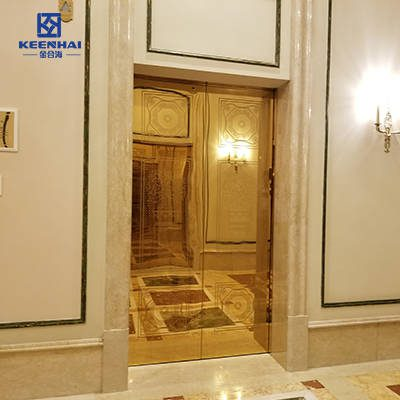
2. Key Factors Affecting the Price
When calculating the total cost for stainless steel elevator doors, several critical factors come into play. Understanding these helps property owners and contractors make informed decisions while avoiding unexpected expenses.
2.1 Material Grade (304 vs 316 Stainless Steel)
The material grade directly impacts both durability and cost. 304 stainless steel is widely used due to its strength and corrosion resistance. Prices range from $1,200–$2,500 per door for standard sizes. In contrast, 316 stainless steel, which contains molybdenum for enhanced corrosion protection, is ideal for coastal areas or high-humidity environments, costing $2,500–$4,000 per door.
Example: A seaside hotel in Miami installed 316 stainless steel elevator doors. Choosing pvdstainlesssteel products ensured long-term corrosion resistance and consistent quality.
Key data points affecting material choice:
-
Environmental exposure – High chloride environments require 316.
-
Traffic intensity – Heavy use favors thicker gauge steel (1.5–2.0 mm).
-
Longevity expectations – 316 doors maintain aesthetics longer, reducing long-term replacement costs.
2.2 Surface Finish and Design Options (Brushed, Mirror, Etched)
The door surface not only affects aesthetics but also price. Brushed finishes are practical, masking fingerprints and minor scratches, costing roughly $1,200–$2,000 per standard 304 door. Mirror finishes provide a luxurious look, priced at $1,500–$2,500, while etched or custom patterned doors push costs even higher to $2,000–$3,500, depending on complexity.
Example scenario: A corporate office in Chicago requested etched brushed stainless steel doors with their company logo subtly engraved. Each custom door cost $2,800. The intricate design required laser etching, which increased production time and labor costs.
Tip: Choosing the right finish for your environment balances cost and maintenance. Brushed surfaces minimize cleaning efforts, while mirror or etched finishes boost aesthetic appeal for premium projects.
2.3 Customization, Branding, and Size Requirements
Custom size, branding, and unique design features significantly influence the final price. Oversized doors exceeding 2.2 meters in height or 1.5 meters in width can add $500–$1,000 per door, depending on the stainless steel gauge. Adding company logos, decorative inlays, or color coatings further increases costs.
Practical case: A luxury apartment complex in New York opted for custom stainless steel elevator doors with a mirrored finish and embedded etched logo for all four residential elevators. Each door cost $3,200, including design consultation and installation. The custom work added roughly 25% to the base material cost.
Step-by-step consideration for customization:
-
Measure the required door dimensions accurately.
-
Determine if standard finishes meet the aesthetic goals or if custom etching/branding is necessary.
-
Calculate additional labor and material costs for oversized or uniquely designed doors.
-
Factor in installation complexity for non-standard door sizes.
Proper planning at this stage ensures that the final investment in stainless steel elevator doors matches both budget and project expectations.
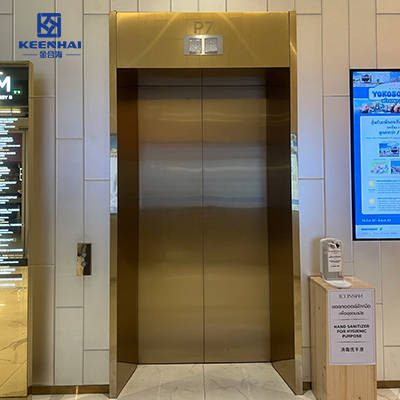
3. Breakdown of Total Cost
Understanding the total cost of stainless steel elevator doors involves analyzing material, manufacturing, installation, and long-term maintenance. Breaking down expenses helps building owners budget accurately and avoid unexpected costs.
3.1 Material and Manufacturing Costs
The material and manufacturing component typically accounts for 50–60% of the total cost. Standard 304 stainless steel doors range from $1,200–$2,500, while 316 stainless steel doors cost $2,500–$4,000 depending on size, thickness, and finish. Mirror or etched finishes add an extra $300–$800 per door due to additional labor and polishing time.
Example: A commercial office in Houston installed 316 stainless steel elevator doors with mirror finish. Each door’s material and fabrication cost totaled approximately $3,400. Custom laser etching and reinforced door frames contributed to the higher cost but ensured long-term durability and aesthetic quality.
Key considerations for reducing manufacturing costs:
-
Choose standard sizes whenever possible.
-
Limit overly intricate surface etching or patterns.
-
Work with manufacturers who provide bundled services for production and finishing.
3.2 Installation and Labor Fees
Installation and labor typically make up 20–30% of the total project cost. Factors affecting labor costs include door weight, building height, and the complexity of automatic or center-opening mechanisms. Commercial installations generally require specialized teams, leading to higher fees.
Practical example: A luxury hotel in Los Angeles installed automatic sliding stainless steel doors on four elevators. Each door required two certified technicians and four hours for full installation. Labor costs reached $450–$650 per door, with additional time billed for wiring sensors and motorized controls.
Tip: Schedule installation during low-traffic hours to reduce disruption and avoid overtime charges. Also, combining multiple elevator installations in a single project often reduces per-door labor costs.
3.3 Maintenance and Replacement Costs Over Time
Long-term maintenance is often overlooked but significantly impacts total cost. Routine cleaning, lubrication of moving parts, and inspection of automatic sensors can add $100–$200 per door annually. Mirror finishes may require more frequent cleaning, while brushed finishes hide fingerprints and minor scratches, reducing upkeep time.
Replacement costs depend on door type and material. Standard 304 doors last 15–20 years, whereas 316 doors in high-corrosion environments can last 25+ years. Budgeting for eventual replacement ensures that property owners avoid unexpected expenses.
Example scenario: A beachfront condominium installed 316 stainless steel elevator doors. Annual maintenance averaged $150 per door, and after 20 years, only minor refurbishing was needed due to the superior corrosion resistance of the 316 grade.
Step-by-step maintenance checklist:
-
Clean doors weekly using non-abrasive stainless steel cleaner.
-
Lubricate hinges or sliding tracks monthly for smooth operation.
-
Inspect automatic sensors and door mechanisms quarterly.
-
Schedule professional inspection every 1–2 years for high-traffic elevators.
Following these steps ensures the doors remain functional, safe, and visually appealing for decades.
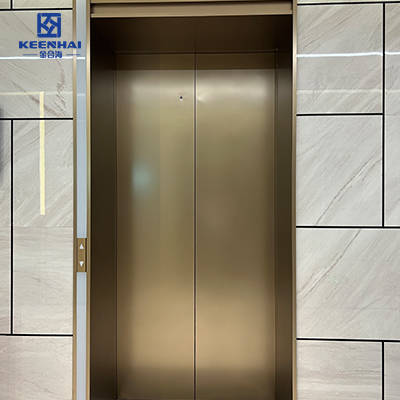
4. Price Comparison With Other Elevator Door Materials
When deciding on elevator doors, it’s important to weigh stainless steel elevator doors against alternative materials like aluminum, glass, or painted steel. Comparing cost, durability, maintenance, and aesthetics helps determine which option provides the best value for your project.
4.1 Stainless Steel vs Aluminum Doors
Aluminum doors are lighter and cheaper, typically costing $800–$1,500 per door, but they are more prone to dents, scratches, and corrosion over time. Stainless steel doors, while pricier at $1,200–$4,000, offer superior durability, fire resistance, and a premium look that stands up to heavy traffic.
Example: A residential building in Miami installed aluminum elevator doors in the lobby. Within 3 years, several dents appeared due to moving furniture and luggage. Replacing them with 304 stainless steel doors cost about $1,700 per door, but the doors have remained flawless for over 5 years.
| Material | Price Range (USD) | Durability | Maintenance Effort | Ideal Use Case |
|---|---|---|---|---|
| Stainless Steel | 1,200 – 4,000 | Very High | Low | Commercial & Luxury Residential |
| Aluminum | 800 – 1,500 | Medium | Medium | Low-traffic Residential |
4.2 Stainless Steel vs Glass or Painted Steel Doors
Glass doors offer a modern, transparent look but are expensive ($2,500–$5,000 per door) and fragile. They require careful handling and frequent cleaning. Painted steel doors are cheaper ($1,000–$2,000) but prone to scratches, chips, and rust in humid environments. Stainless steel strikes a balance: long-lasting, low maintenance, and visually appealing.
Example: A boutique hotel in Los Angeles experimented with glass elevator doors for aesthetic appeal. Maintenance costs exceeded $300 per year due to cleaning and occasional chip repairs. Switching to brushed stainless steel doors cut annual upkeep to $150 per door while maintaining a sleek, modern appearance.
| Material | Price Range (USD) | Durability | Maintenance Effort | Aesthetic Appeal |
|---|---|---|---|---|
| Stainless Steel | 1,200 – 4,000 | Very High | Low | High |
| Glass | 2,500 – 5,000 | Medium | High | Very High |
| Painted Steel | 1,000 – 2,000 | Medium-Low | Medium | Medium |
4.3 Which Option Offers the Best Value?
From both a cost and longevity perspective, stainless steel elevator doors consistently provide the best return on investment. They combine durability, low maintenance, and premium aesthetics, making them ideal for commercial buildings, luxury apartments, and high-traffic areas.
Practical tip: When budgeting for elevator doors, consider:
-
Initial material cost – Stainless steel is higher upfront but saves money on maintenance and replacement.
-
Traffic and usage intensity – Heavy use favors stainless steel over aluminum or painted steel.
-
Environmental conditions – Coastal or humid locations require corrosion-resistant materials like 316 stainless steel.
-
Design and branding needs – Stainless steel allows for easy customization, etching, and finishes without sacrificing durability.
In short, stainless steel elevator doors offer long-term reliability, minimal upkeep, and superior visual impact compared to other materials.
Investing in stainless steel elevator doors ensures a durable, low-maintenance, and visually appealing solution for any building. By understanding the cost factors—from material grade and door type to finish and customization—you can plan your budget accurately. Choosing the right doors upfront saves money on replacements and maintenance while providing a long-lasting, premium look for years to come.


